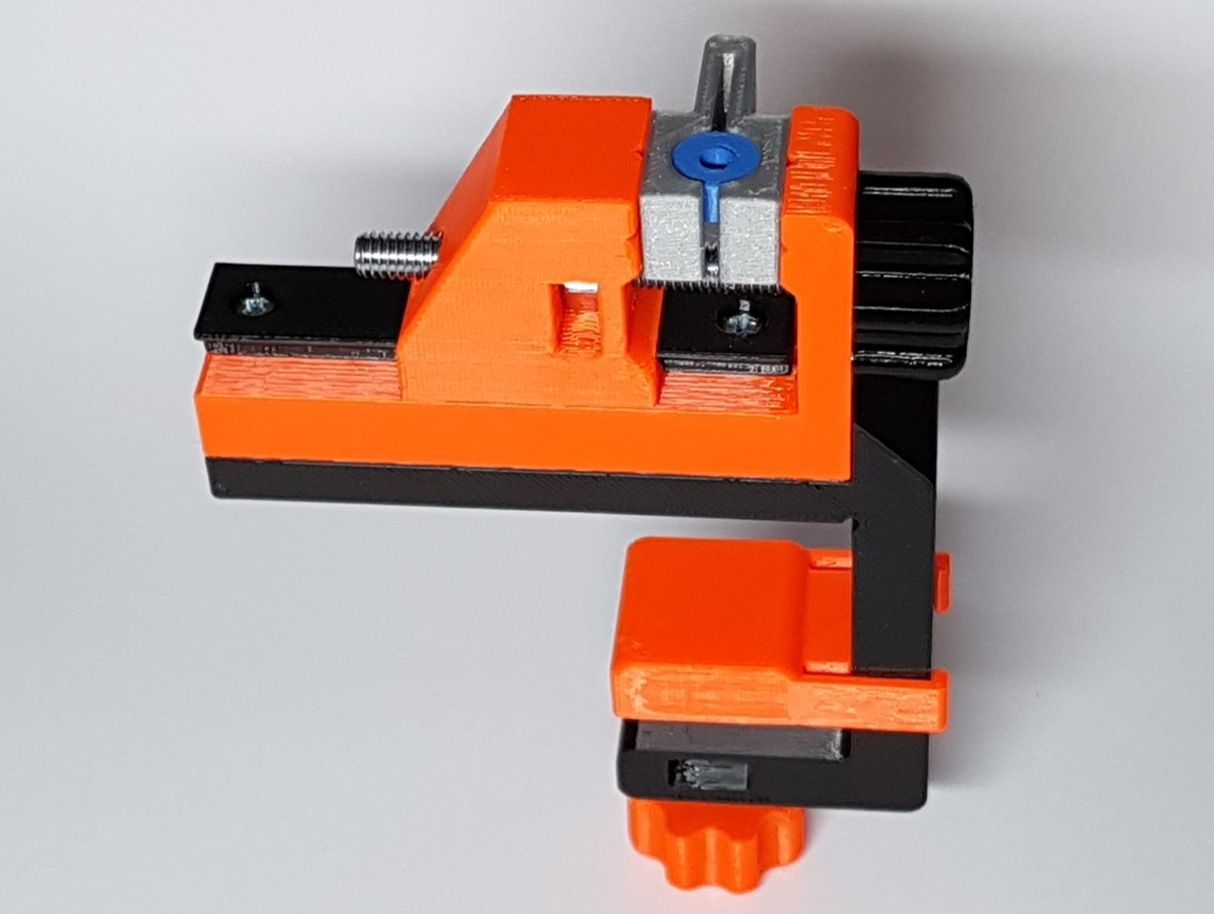
Miniature vice in action: A test object
prusaprinters
<p>Now that I have designed this miniature vice, I have no idea how I could ever live without one. Get the latest version here if you don't have one yet:<br/> <a href="https://www.prusaprinters.org/prints/53471">https://www.prusaprinters.org/prints/53471</a></p> <p>Within one day of having it complete with it's table clamp, I decided I want some little distance rolls on the bottom of one of them, so that I can put on little rubber knobs. But how do you cut a M4 thread into these only 10mm small and round parts, that you can't really grab to hold them, while you try to force the thread cutter in?</p> <p>Well, fear not! After all we have our little vice now (actually I have printed three of them right away, just to be on the safe side). And we have a 3D printer, so we can easily make ourselves a little fixture for these round objects. With the fixture it's a simple thing to clamp the ring straight and level into the vice.</p> <p>As the vice is clamped to our table, we now have both hands free to drive the thread cutter precisely into the rings. The whole thread cutting becomes a matter of a few minutes and the results are excellent as you can see in the picture. All four rings sit perfectly flat on the ground plane of the vice.</p> <p>Feel free to try it yourself, both the rings and the fixture are available in this post. At 100% scale the fixture can hold round objects of 10mm diameter and up to 10mm of height. By simply scaling it in Prusaslicer, you can adapt it for any round (and relatively flat) part, e.g. scale it to 254% for holding a one-inch round object of up to one inch height. In that case, the width of the fixture would be 40.6mm, which is just within the range that the miniature vice can safely clamp.</p> <p>Happy printing!</p> <h3>Print instructions</h3><p>Both parts are really trivial to print, do not need supports and should work with basically all sensible materials. I have printed the fixture from PETG, which makes it a bit more flexible. But since it does not need to bend a lot, I am fairly sure it will work in PLA as well. The rings are tested both in PLA and PETG, the pictures show the blue PLA rings.</p> <p>As both parts need to take some force during the tread cutting, and since both are really tiny anyhow, I recommend to print them with 100% infill, to avoid any possible troubles.</p>
With this file you will be able to print Miniature vice in action: A test object with your 3D printer. Click on the button and save the file on your computer to work, edit or customize your design. You can also find more 3D designs for printers on Miniature vice in action: A test object.
